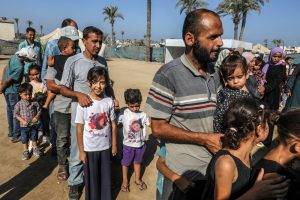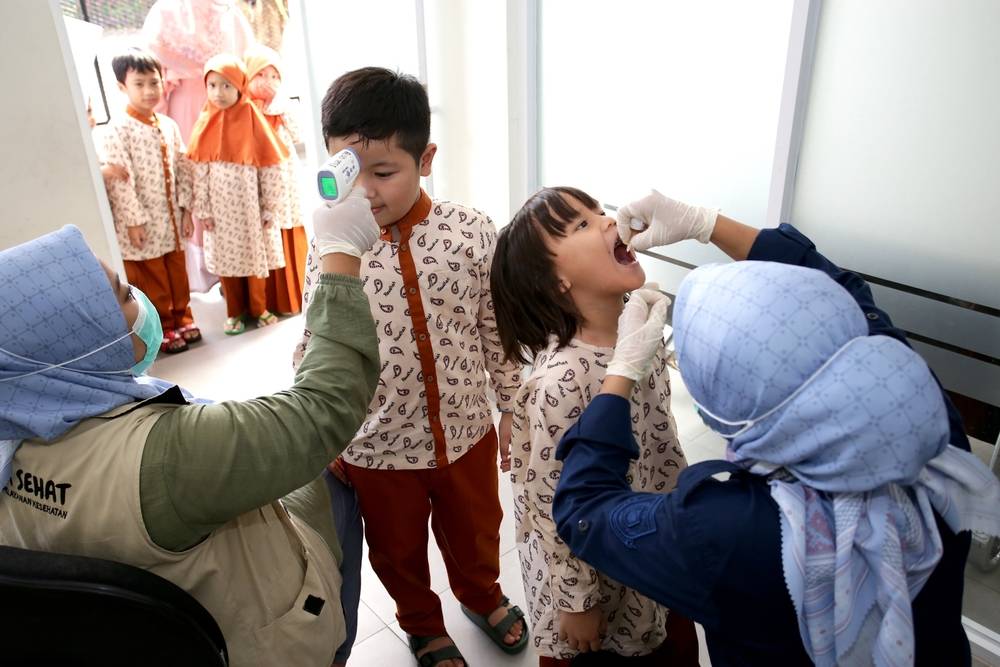Despite global campaigns to wipe out polio, this deadly virus is still making a comeback in some parts of the world.
Southeast Asia has managed to stay mostly polio-free, but the risk of resurgence remains ever-present as polio eradication efforts face challenges globally. With wild poliovirus still circulating in places like Afghanistan and Pakistan, no region can afford to let its guard down.
What is Polio?
Polio, or poliomyelitis, is a highly infectious virus that mainly affects children under the age of 5. While most cases show no symptoms, the virus can attack the nervous system and cause paralysis. According to the World Health Organization (WHO), 1 in 200 polio cases results in irreversible paralysis, and 5-10% of those affected die when their breathing muscles are paralysed.
Polio has been eliminated from most parts of the world, but according to an Associated Press (AP) report, the virus continues to spread in regions with low vaccination coverage. Until global eradication is achieved, polio will remain a threat in areas where children are not fully vaccinated.
Global Efforts to End Polio
The push to eradicate polio began in 1988 with the launch of the Global Polio Eradication Initiative (GPEI). Spearheaded by the World Health Organization (WHO), in partnership with Rotary International, the Centers for Disease Control and Prevention (CDC), and UNICEF, the initiative aimed to rid the world of polio, following the success of the smallpox eradication campaign. At that time, polio was rampant, with an estimated 350,000 cases annually across 125 endemic countries.
Thanks to mass immunisation campaigns and widespread use of the oral polio vaccine (OPV), cases dropped by over 99%. By 2023, wild poliovirus remained endemic in just two countries—Afghanistan and Pakistan. The OPV has been critical due to its ease of administration and its ability to induce strong gut immunity, helping prevent the virus from spreading.
However, several obstacles have slowed eradication efforts. Health officials need to vaccinate at least 95% of the population to stop the virus from circulating. This is especially difficult in conflict zones and areas with weak healthcare systems. In countries like Afghanistan and Pakistan, political instability, insecurity, and even attacks on health workers have severely hindered vaccination campaigns. In parts of Afghanistan, opposition from the Taliban has further limited access to vaccines.
The Ongoing Threat of Vaccine-Derived Polio
Beyond the wild virus, the use of the oral polio vaccine (OPV) itself has posed a unique challenge. In rare cases, the live virus used in OPV can mutate and cause vaccine-derived poliovirus (VDPV), leading to outbreaks in areas with low vaccination coverage. For instance, in 2024, a case of polio was detected in Palestine, marking the first case there in over 25 years.

Image: WHO, UNICEF and UNRWA deliver vaccinations to IDP tents on second day of polio vaccination campaign for Palestinian children in Deir al-Balah, central Gaza Strip, on September 2, 2024.
Health officials traced the Gaza infection to a mutated strain of the virus derived from the vaccine, highlighting the risk in areas with inconsistent vaccination coverage. WHO and its partners are now shifting from OPV to the inactivated polio vaccine (IPV), which uses a killed virus that cannot mutate, though it is more expensive and harder to distribute.
While the original goal was to eradicate polio by 2000, ongoing challenges have extended this timeline. According to Columbia University professor Scott Barrett when speaking to AP, “The problem with trying to eradicate polio is that the need for perfection is so great and there are so many weak links.” These weak links include both wild poliovirus in endemic countries and vaccine-derived strains emerging in low-coverage regions like Gaza.
“The technical feasibility is there, but we live in a vastly imperfect world.” he said.
Ongoing Vigilance and the Threat of Reintroduction
Although Southeast Asia is polio-free, the risk of the virus re-entering the region persists. Dr Poonam Khetrapal Singh, WHO Regional Director for Southeast Asia, emphasised in 2022 that “gaps persist, especially at the sub-national level. We need to scale up surveillance and immunisation coverage” to prevent future outbreaks. The region remains vulnerable to potential spillover from countries where wild poliovirus is still endemic.
The region has faced challenges in maintaining its polio-free status. In Malaysia, the Ministry of Health reported the first polio case in over 20 years in 2019. The infection was traced to a vaccine-derived poliovirus (VDPV) linked to circulating strains in the Philippines. This case highlighted the fragile nature of Southeast Asia’s polio-free status. Malaysia quickly launched emergency vaccination campaigns, but the incident served as a reminder. High coverage must be sustained to prevent both wild poliovirus and vaccine-derived strains.
Indonesia has also remained polio-free since 2014, despite concerns over its low routine immunisation rates, particularly in remote and underdeveloped areas. Poor sanitation, combined with gaps in routine immunisation, makes regions like these vulnerable to a potential resurgence of the virus. Countries across Southeast Asia continue to face the dual challenge of maintaining high immunisation rates and addressing gaps in sanitation infrastructure.

Image: East Sumba, East Nusa Tenggara, Indonesia – 07. 23. 2024 – Polio Immunization Week 2024 Begins: East Sumba Government Targets 100 Percent Polio Vaccination Coverage
The South-East Asia Regional Certification Commission for Polio Eradication praised the region for keeping polio at bay during COVID-19. Polio surveillance and vaccination programs continued despite resource pressures.
However, the Commission stressed that “the situation requires constant monitoring until global polio eradication is achieved.” Until then, Southeast Asia must remain prepared to respond swiftly to any potential outbreaks.
Vaccination Efforts in Southeast Asia
Southeast Asian countries have implemented robust vaccination strategies to maintain immunity and prevent any resurgence. The region continues to rely on a combination of the oral polio vaccine (OPV) and the inactivated polio vaccine (IPV), depending on local epidemiological needs.
OPV, which is administered orally and is inexpensive, has been a cornerstone of mass immunisation drives. However, as seen in the 2019 case in Malaysia, vaccine-derived poliovirus (VDPV) remains a concern in areas with low immunisation coverage. The WHO recommends that countries gradually shift to the IPV, which contains a killed version of the virus, eliminating the risk of mutation.
Countries like Singapore and Thailand have maintained high vaccination rates, incorporating both vaccines into routine immunisation schedules. In Singapore, booster doses are also recommended for adults travelling to regions with ongoing polio transmission. Meanwhile, Indonesia and Malaysia have faced challenges in ensuring consistent coverage, especially in rural areas where healthcare access is limited.
In addition to routine vaccinations, the region has also leveraged its polio infrastructure to enhance broader healthcare initiatives. Polio workers were instrumental during the COVID-19 pandemic, where their expertise in disease surveillance and immunisation played a pivotal role in vaccine distribution and maintaining healthcare access.
Watch now: Childhood Vaccinations Saves Lives & Here’s How | Dr Reinalyn San Andres-Tiangha, Paediatrician
The Importance of Global Eradication
While Southeast Asia has managed to keep polio at bay, the ongoing presence of the virus in other parts of the world remains a threat. According to the WHO, as long as one child remains infected, children in all countries are at risk of contracting polio. This is because polio spreads easily, particularly in regions with poor sanitation and low vaccination rates. The interconnectedness of today’s world forces even polio-free regions to remain vigilant, as travel or migration could reintroduce the virus.
Failure to eradicate the disease globally could reverse decades of progress. The WHO estimates that if polio is not eradicated, 200,000 new cases could emerge every year within the next decade. Countries with weaker health systems and low immunisation coverage would be particularly vulnerable, leading to a resurgence of the disease.
Beyond the human cost, the financial toll of failing to eradicate polio would be enormous. Economic modelling suggests that global eradication could save at least $40–50 billion, mostly in low-income countries where vaccination efforts have been the most crucial. Achieving global eradication would also mean that no child would ever suffer from polio-related paralysis again.
Why We Cannot Let Our Guard Down
Polio may be close to eradication, but the recent outbreaks in regions like Palestine and vaccine-derived cases in Southeast Asia remind us that the fight is far from over. Countries that have achieved polio-free status must remain vigilant, maintaining high vaccination coverage and strong surveillance systems to prevent reintroduction.
As Dr Poonam Singh, highlighted, ongoing efforts must remain strong to prevent any backslide in progress. She warned that the region cannot afford to become complacent while polio still lingers in other parts of the world.

